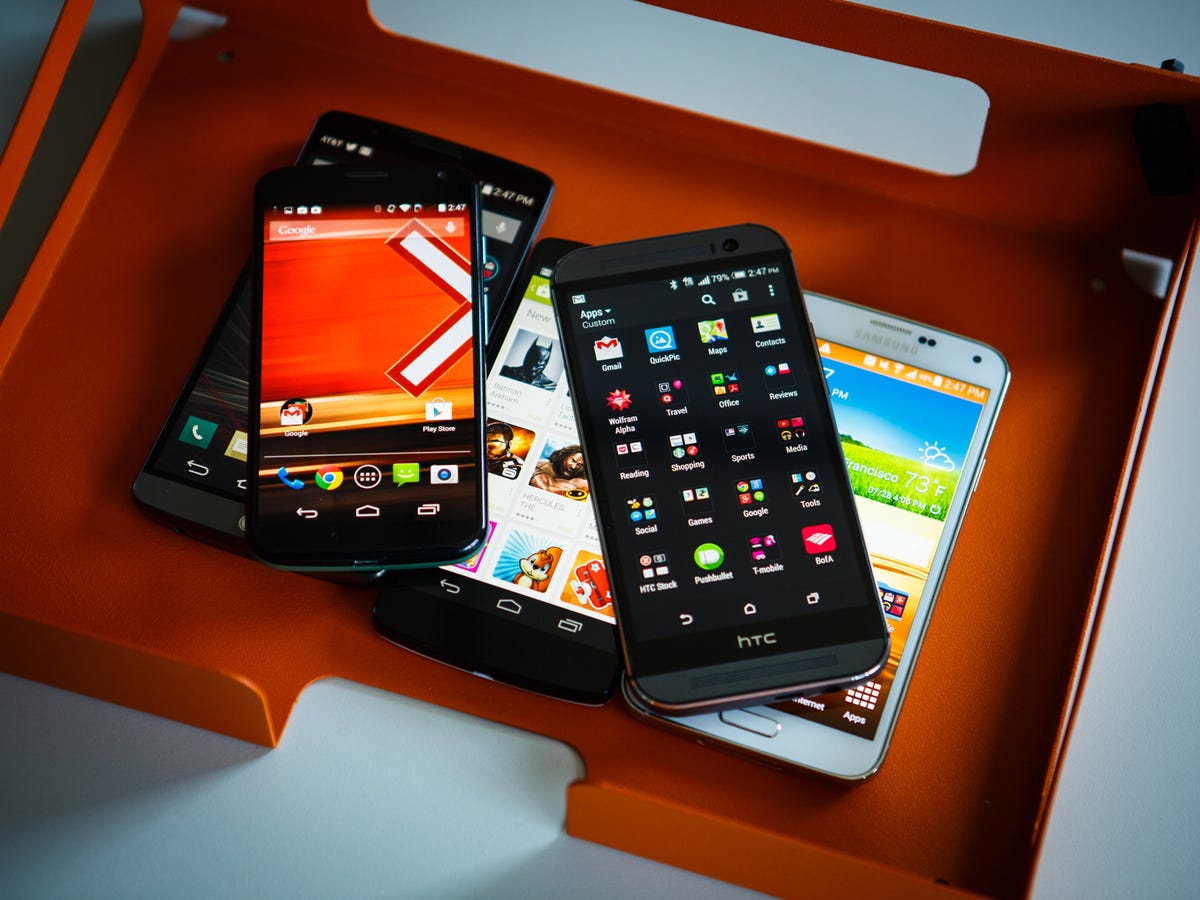 Why You Can Trust CNET
Why You Can Trust CNET The many faces of Android (pictures)
For years, Android phone manufacturers have tweaked the stock operating system from Google to give it their own design. Let's take a look at what sets these designs apart from each other.

One operating system, many designs
Android phones come in all shapes and sizes, but perhaps what sets them apart the most is what's on their screens. That's because manufacturers tweak the look of the Android operating system to add their own style and special software features.
In the following slides, I'll highlight the custom "skins" that the top cell phone companies use to change the face of Google's Android.
Stock Android
Before we look at the custom skins manufacturers give their phones, let's start with stock Android. This is the untouched version of the operating system built by Google and which ships on many devices, including the Nexus line.
Google's current design standard, called Material Design, was introduced with Android 5.0 Lollipop on phones. That design has remained through the latest version of Android, 6.0 Marshmallow, but it's gotten a few updates. Above is the Nexus 6P running Marshmallow.
Samsung TouchWiz
Samsung's TouchWiz skin is one of the most recognizable, thanks to its bright colors and cartoon-like design. Another hallmark of this skin is that it is full of features to help you multitask, or simply make the phone more approachable for first-time smartphone buyers.
HTC Sense
HTC Sense, which runs on the original HTC One and HTC One M9, sports a refined, yet colorful design. The user interface is uncluttered and not overwhelmed with features. You can personalize Sense by picking a theme, which changes the accent colors used in apps and menus.
Sense's most notable feature is Blinkfeed, a news feed that lives on one of your home screens and shows you news and social updates.
LG
Like Touchwiz, LG's custom skin, which has no official name, comes with many features to make your phone easier to use. However, LG uses a muted, subtle design that looks more polished than TouchWiz.
You get a lot of freedom to personalize the LG UI by picking animation effects or the layout of on-screen buttons, and you can apply themes that completely change your phone's design.
Motorola
Motorola's design philosophy is along the lines of "If it's not broken, don't fix it." Which means the latest generation of Moto and Droid phones from the company run stock Android with few modifications.
With these phones, you get the standard Material design. Instead of tweaking the UI, Motorola has simply added a few voice control, gesture and notification features.
Sony Xperia Home
Last up is Sony's Xperia Home UI, which runs on the company's Xperia phones. Unlike the other skins, which use more modern "flat" designs, Sony is still using a 3D-like, realistic design. That means icons pop off the screen and the switches in the settings menu for Wi-Fi and Bluetooth look like physical switches.
With Xperia Home, you get a few chances to customize the design, mostly with pre-installed and downloadable themes. Sony also includes a simplified home screen feature, which cuts out clutter for first-time smartphone users.
Altering your Android
What to change the custom skin that came with your phone? You have a few options. Read more about the differences between Android skins, and then check out these how-to articles on installing a ROM or using a home screen launcher.
Everything you need to know about Android launchers
Customize your Android home screen experience
Hack your Android like a pro: Rooting and ROMs explained

